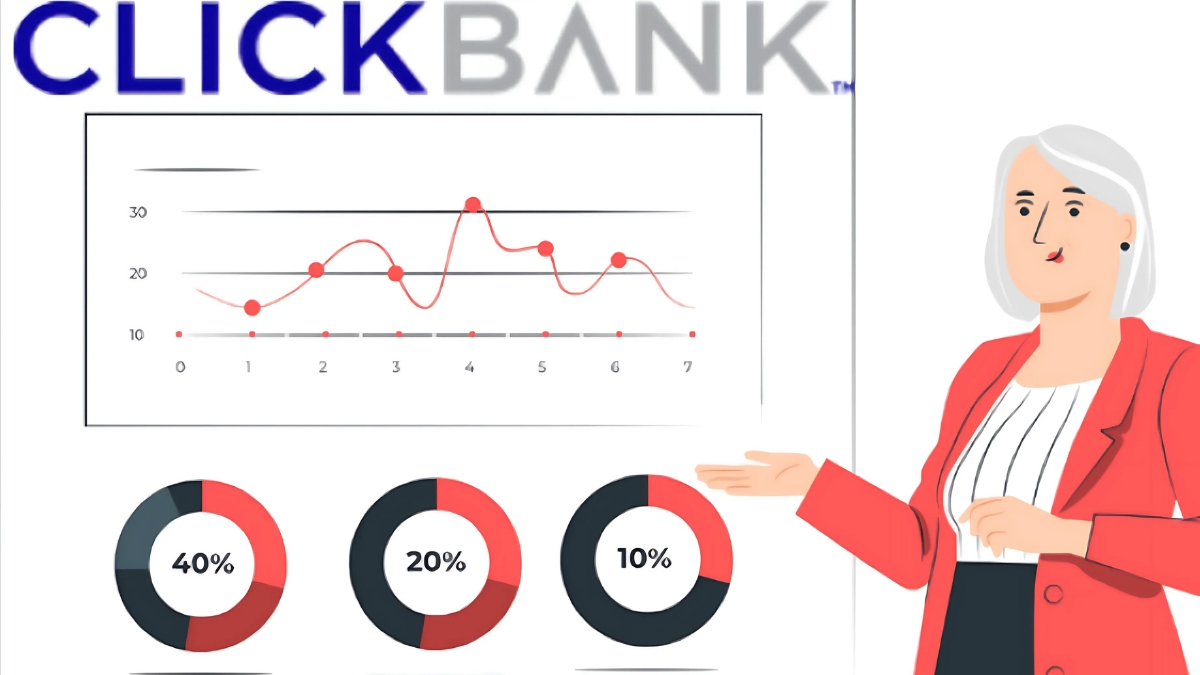
15 Best Affiliate Marketing Programs for Beginners in 2025
Did you know that a staggering 81% of brands now rely on affiliate marketing to drive sales? That’s right – and the industry is projected to hit $15.7 billion by 2024! Whether you’re just starting your online journey or looking to diversify your income streams, choosing the right affiliate program can make or break your success. In this comprehensive guide, I’ll walk you through the absolute best affiliate marketing programs for beginners, based on my years of experience and real success stories from new affiliates. Let’s turn your affiliate marketing dreams into reality!
What Makes a Great Affiliate Program for Beginners?
When I first started with affiliate marketing back in 2018, I made a mistake that cost me three months of wasted effort. I jumped into the first affiliate program I found without doing any research. Boy, was that a learning experience! Now, after years of trial and error (and honestly, some pretty painful lessons), I’ve figured out exactly what beginners should look for in an affiliate program.
Let’s talk about commission structures first, because this is where I see most newbies get tripped up. You know what’s frustrating? Seeing a program advertising “up to 50% commission!” only to discover most products actually pay 5%. Here’s what I’ve learned to look for: programs that offer at least 20% commission on physical products or 30% on digital products, with clearly stated terms. For example, Amazon Associates starts at 1-3% which sounds low, but their conversion rates are typically higher because people trust Amazon. I learned this the hard way after promoting some sketchy high-commission products that nobody bought!
Payment thresholds are another crucial factor that nobody warned me about. I remember waiting forever to hit a $100 threshold with one program, while my earnings just sat there untouchable. Now I recommend beginners look for programs with lower payment thresholds – ideally $25 to $50. Companies like ClickBank that pay weekly with a $10 threshold are perfect for beginners because you can get your first payment faster, which is super motivating when you’re just starting out.
The most underrated feature of a good affiliate program? Support and training resources. Trust me on this one – I spent countless hours googling basic questions that a good training program would have answered in minutes. Look for programs that offer video tutorials, regular webinars, and (this is crucial) an active Facebook group or community forum. ShareASale, for instance, has an awesome knowledge base that saved me tons of time when I was getting started.

Cookie duration is something I wish someone had explained to me earlier. Here’s the deal: if a program only offers a 24-hour cookie, your potential customer needs to make a purchase within 24 hours of clicking your link for you to get credit. I learned this expensive lesson after promoting a program with a 1-day cookie, only to discover most of my commissions were lost because people often take several days to make a decision. Now I primarily work with programs offering at least 30-day cookies. Some of my best conversions have come from programs like Bluehost that offer 60-day cookies.
One thing that’s absolutely changed my affiliate marketing game is having access to user-friendly dashboards and tracking tools. When I first started, I was using a program with such a confusing dashboard that I couldn’t even tell if my links were working! These days, I won’t touch a program unless it offers real-time tracking and clear analytics. I particularly love programs like ConvertKit and SEMrush that show you exactly where your conversions are coming from – it makes optimization so much easier.
Here’s a pro tip I discovered after way too much trial and error: before joining any program, generate a test link and click through it yourself. See how the tracking works, how the product is presented, and whether the checkout process is smooth. I’ve saved myself from promoting several poorly designed programs by doing this simple test.
Remember, as a beginner, you want to set yourself up for success from day one. Don’t make the same mistakes I did by choosing programs just because they promise high commissions. Look for the complete package: fair commissions, reasonable payment terms, solid training, good cookie duration, and reliable tracking tools. Trust me, your future self will thank you for doing this research upfront!
Top E-commerce Affiliate Programs for Newcomers
When I first started looking into affiliate marketing, I felt completely overwhelmed. There were so many options and I had no idea where to begin! Sound familiar? Well, after diving in head-first and making plenty of mistakes along the way, I’ve learned a thing or two about choosing the right e-commerce affiliate programs as a newcomer.
Let’s start with the big kahuna – the Amazon Associates Program. I’m not gonna lie, I was seriously intimidated by Amazon at first. But once I figured out their eligibility requirements, it all started to click. Basically, you need to have an active website, app, or YouTube channel to qualify. Oh, and no shady business – your content has to be family-friendly! Amazon’s commissions vary by product category, but generally range from 1-10%. It may not sound like much, but trust me, it adds up quick with the sheer volume of products they offer.
Next up, we’ve got the Walmart Affiliate Program. What I love about Walmart is their straightforward commission structure. You’ll earn 4% on all sales referred through your unique affiliate link, with no confusing tiers or categories to keep track of. Plus, their 3-day cookie duration means you’ve got a decent shot at snagging commissions even if your referrals don’t make a purchase right away.
Now, if you’re looking for a slightly more upscale option, check out the Target Affiliate Program. I’ll admit, their application process is a bit more selective than some others. They’re looking for affiliates with high-quality, relevant content and a solid audience. But if you can make the cut, it’s so worth it! Target offers a generous 8% commission rate and a whopping 7-day cookie window.

For those of you who are all about the thrill of the auction, say hello to the eBay Partner Network! One thing I really dig about eBay’s program is the opportunity to earn commissions on both sale items and regular listings. And with millions of products to promote across every category imaginable, the earning potential is massive. Just be prepared to put in some serious time creating compelling content that drives steady traffic.
Last but not least, let’s talk about the Etsy Affiliate Program. If you’re in a creative or artsy niche, this could be your golden ticket. Etsy focuses on unique, handmade, and vintage items from independent sellers around the globe. As an Etsy affiliate, you’ll earn a 4% commission on sales generated through your links. The key here is to choose products that truly resonate with your audience and complement your existing content.
Whew, that was a lot of info! Here’s the bottom line – take the time to research each program thoroughly and choose one (or a few) that align with your niche and audience. Don’t be afraid to start small and scale up as you get the hang of things. And most importantly, stay authentic and true to yourself. Your readers can smell a phony from a mile away!
Dive into the world of Modern Affiliate Marketing with expertly crafted eBooks designed for beginners and seasoned marketers alike. These eBooks cover everything from building profitable affiliate campaigns to mastering SEO and social media strategies. Stay ahead of trends with actionable insights, proven techniques, and success stories from top affiliates. Whether you’re looking to boost income or launch your first campaign, these guides are your ultimate resource. Start your journey to financial freedom today! Link Ebook
Best Digital Product Affiliate Programs
When I first started exploring affiliate marketing, I was drawn to digital products. The idea of promoting downloadable courses, ebooks, and software just seemed way less complicated than dealing with physical products and inventory. Boy, was I in for a surprise! Turns out, choosing the right digital product affiliate programs is just as crucial as any other type of affiliate marketing. Let me save you some time and share what I’ve learned about the best options out there.
First up, we’ve got Clickbank. This platform is like the granddaddy of digital product affiliate programs. When I initially browsed their marketplace, I was blown away by the sheer volume and variety of products available. But here’s the thing – not all of those products are created equal. The key is to dig deep and look for high-converting offers that actually deliver value to customers. I’ve found the most success promoting products in the health, wealth, and relationships niches on Clickbank.
Next, let’s talk about the Udemy Affiliate Program. If you’re into online learning, this one’s for you! Udemy offers a huge selection of courses on everything from coding to cooking. As an affiliate, you’ll earn a commission on each course sale generated through your unique link. One tip I’ve learned the hard way – make sure to choose courses with high ratings and engagement levels. There’s nothing worse than promoting a dud of a course and losing your audience’s trust.
Now, here’s a slightly different twist on digital product affiliate marketing – the Fiverr Affiliate Program. Instead of promoting products, you’re actually promoting services offered by freelancers on the Fiverr platform. This can be anything from graphic design to video editing to social media management. The cool thing about Fiverr is that they offer a tiered commission structure, so the more sales you drive, the higher your earnings potential.

If you’re passionate about education and lifelong learning, check out the Coursera Partner Program. Coursera offers online courses and degrees from top universities around the world. As an affiliate, you can promote individual courses or even full degree programs. The commissions here are pretty sweet – up to 45% for some courses! Just be aware that the Coursera affiliate approval process is a bit more selective than some other programs.
Finally, I want to touch on digital product marketplaces like Gumroad, Creative Market, and Sellfy. These platforms allow creators to sell their own digital products like graphics, templates, presets, and more. As an affiliate, you can sign up to promote products that align with your niche and audience. The commission rates vary by platform and seller, but typically range from 10-50%. The great thing about these marketplaces is the unique, high-quality products you won’t find anywhere else.
So, which digital product affiliate program is right for you? Honestly, it depends on your niche, audience, and personal preferences. I recommend trying out a few different options and seeing what resonates best with your people. And don’t be afraid to mix and match! There’s no rule saying you can only promote products from one platform.
High-Paying SaaS Affiliate Programs
If you’re looking to level up your affiliate game, it’s time to start exploring SaaS (Software as a Service) programs. Why? Because these bad boys often offer recurring commissions, meaning you can earn money month after month for a single referral. It’s like the gift that keeps on giving! But with so many options out there, it can be tough to know where to start. Let me break down some of the highest-paying SaaS affiliate programs I’ve come across in my own journey.
First on the list is the Shopify Affiliate Program. If you’re not familiar, Shopify is an e-commerce platform that allows anyone to set up an online store. As a Shopify affiliate, you’ll earn a recurring commission of up to $2,000 per referral, depending on the plan they sign up for. That’s some serious cash! The best part? Shopify offers a 90-day cookie window, so even if your referral doesn’t sign up right away, you still have a chance to earn that commission.
Next up, we’ve got the Bluehost Affiliate Program. Bluehost is a popular web hosting service used by millions of websites worldwide. While they don’t offer recurring commissions like Shopify, they do have some seriously impressive one-time payouts. Depending on the plan your referral chooses, you can earn anywhere from $65 to $130 per signup. The key here is volume – the more people you can refer to Bluehost, the more those one-time commissions will add up.
If you’re in the business of promoting marketing tools, you’ll definitely want to check out the ConvertKit Partner Program. ConvertKit is an email marketing platform designed for creators and online entrepreneurs. As a ConvertKit affiliate, you’ll earn a 30% recurring commission on each referral’s monthly subscription. So if someone signs up for a $29/month plan through your link, you’ll earn $8.70 every month for as long as they remain a paying customer. The best part? ConvertKit offers a 60-day cookie window and provides tons of resources to help you succeed as an affiliate.
For those of you targeting a more professional audience, the SEMrush Affiliate Program might be your perfect match. SEMrush is an all-in-one digital marketing toolkit used by businesses and marketers around the world. As an affiliate, you’ll earn a whopping 40% recurring commission on each subscription referred through your unique link. Plus, SEMrush offers a generous 120-day cookie window, giving you plenty of time to seal the deal with potential referrals.

Now, I know what you’re thinking – these all sound amazing, but what about payment terms and support? Well, I’ve done the research so you don’t have to. Shopify pays out commissions on a monthly basis, while Bluehost and ConvertKit both offer net-60 payment terms. SEMrush has a slightly longer payment cycle, with commissions being paid out 2 months after the end of each month.
In terms of support, I’ve found Shopify and ConvertKit to be the most responsive and helpful to their affiliates. Bluehost and SEMrush both offer solid resources and documentation, but can be a bit slower to respond to individual inquiries.
At the end of the day, the best SaaS affiliate program for you will depend on your niche, audience, and personal preferences. My advice? Start by choosing one or two programs that align with your brand and go all-in on promoting them. Don’t spread yourself too thin by trying to promote every SaaS tool under the sun.
Remember, the key to success with SaaS affiliate marketing is to build trust with your audience. Only recommend tools that you’ve personally used and believe in. Share case studies and success stories of how these tools have helped you or your clients achieve results. And don’t be afraid to get creative with your promotions – think webinars, demo videos, and free trials.
With a little effort and a lot of hustle, you can start earning some serious passive income with SaaS affiliate programs. Who knows – you might just be able to quit your day job and become a full-time affiliate marketer! Wouldn’t that be the dream? So what are you waiting for? Start researching those high-paying SaaS affiliate programs and get ready to watch the commissions roll in. Happy promoting, my friends!
Best Affiliate Networks for Beginners
When I first dipped my toes into the affiliate marketing waters, I had no idea where to start. I knew I wanted to promote products and earn commissions, but the sheer number of affiliate networks out there was overwhelming. Sound familiar? Don’t worry, I’ve got your back. Let’s dive into some of the best affiliate networks for beginners and what makes them so great.
First up, we’ve got ShareASale. This platform has been around since 2000 and is home to over 4,500 merchants across a wide range of categories. What I love about ShareASale is how easy it is to navigate. You can search for merchants by keyword, category, or even commission rate. Some of the top merchants on ShareASale include Reebok, Weebly, and Grammarly. As a beginner, you’ll appreciate the clear reporting and helpful resources available in the ShareASale interface.
Next on the list is CJ Affiliate (formerly Commission Junction). This network is a bit more selective than ShareASale, but don’t let that scare you off. The application process is straightforward, and once you’re in, you’ll have access to some seriously big-name brands like Overstock, GoPro, and Barnes & Noble. One thing to note about CJ Affiliate is that they require you to have a website or blog to get started. But if you’ve got that covered, you’ll be able to take advantage of their deep linking capabilities and robust reporting tools.
If you’re looking for something a little different, check out Impact Radius. This affiliate network focuses on performance-based partnerships, which means you’ll have the opportunity to work with some unique and innovative brands. Some of the standout merchants on Impact Radius include Uber, Airbnb, and Shopify. What sets Impact apart is their emphasis on collaboration between affiliates and brands. They even have a feature called “Radius Messaging” that allows you to communicate directly with merchant reps to get the support you need.

For those of you with global ambitions, Awin might be your perfect match. This network operates in 180 countries and offers opportunities to promote over 13,000 advertisers. Some of the top merchants on Awin include Etsy, AliExpress, and Hyatt Hotels. One thing I really appreciate about Awin is their variety of payment options. You can choose to be paid by direct deposit, PayPal, or even check. And with a low payout threshold of just $20, you won’t have to wait forever to see your earnings.
Now, I know what you might be thinking – these networks sound great, but how do I actually get accepted as a beginner? Here are a few tips I’ve learned along the way:
Have a professional-looking website or blog. Affiliate networks want to see that you have a platform to promote their merchants’ products. Make sure your site is easy to navigate and free of spammy content.
Build up some traffic before applying. Networks want to know that you have an audience to promote to. Focus on creating quality content and promoting it through social media and other channels.
Be honest in your application. Don’t try to inflate your traffic numbers or make false claims about your promotional abilities. Networks can spot a fraud from a mile away.
Start with a few key merchants. When you’re first starting out, it’s easy to get overwhelmed by all the options. Instead of applying to every merchant under the sun, choose a handful that align with your niche and audience.
Don’t be afraid to reach out for help. Most affiliate networks have dedicated support teams to assist you with any questions or issues you may have. Don’t be shy about reaching out and asking for guidance.
Remember, success in affiliate marketing doesn’t happen overnight. It takes time, effort, and a whole lot of trial and error. But by starting with a solid foundation on a reputable affiliate network, you’ll be well on your way to earning those sweet, sweet commissions.
So what are you waiting for? Choose one of these top affiliate networks for beginners and start exploring the merchants and offers available. Who knows – you might just find your perfect match and start raking in the dough. Happy affiliate marketing, my friends!
Unlock the secrets to affiliate marketing success with Start Affiliate Marketing Like a Pro eBooks. Perfect for beginners and aspiring professionals, these guides provide step-by-step strategies for building high-converting campaigns, choosing the best products, and maximizing earnings. Learn pro tips on traffic generation, analytics, and scaling your business. With practical advice and expert insights, you’ll be on your way to affiliate mastery in no time. Start your journey today and watch your profits soar!
How to Get Started With These Programs
First things first, you need to choose your affiliate network. In the previous section, we covered some of the best options for beginners, like ShareASale, CJ Affiliate, Impact Radius, and Awin. Take some time to research each one and decide which aligns best with your niche and goals. Once you’ve made your choice, it’s time to apply.
The application process can vary a bit from network to network, but generally, you’ll need to provide some basic information about yourself and your website or blog. This includes things like your URL, traffic stats, and a brief description of your promotional methods. Some networks may also require you to create a publisher profile or take a quick quiz to test your affiliate marketing knowledge.
Once you’re approved (fingers crossed!), it’s time to start browsing merchants and offers. Most networks have a searchable database where you can filter by category, commission rate, and other criteria. Take your time here and really dig into the details. Look for merchants that offer products or services that align with your audience’s interests and needs.
When you’ve found a merchant you want to promote, it’s time to create your first affiliate campaign. This typically involves generating a unique affiliate link that you can use to track clicks and sales. Some networks also offer creative assets like banners and product images that you can use in your promotions.
Now, before you go slapping that affiliate link all over your site, let’s talk about some essential tools and resources you’ll need as a beginner. First and foremost, you’ll want to invest in a reliable link cloaking tool. This allows you to create short, branded links that are easy to share and track. Some popular options include Pretty Links and Thirsty Affiliates.
You’ll also want to make sure you have a solid understanding of FTC guidelines and disclosure requirements. Basically, anytime you’re promoting an affiliate product, you need to let your audience know that you may receive a commission if they make a purchase through your link. This can be as simple as adding a brief disclosure statement at the beginning or end of your post.

Another key resource for affiliate marketing beginners is a good analytics platform. Most affiliate networks will provide basic tracking and reporting, but you may want to use a tool like Google Analytics to get a deeper understanding of your traffic and conversion rates. This can help you identify which promotions are working well and which ones may need some tweaking.
Now, let’s talk about some common mistakes to avoid as a beginner affiliate marketer. One of the biggest pitfalls is promoting too many products at once. It’s tempting to want to promote everything under the sun, but this can actually backfire and confuse your audience. Instead, focus on a few key products that you really believe in and can speak to authentically.
Another mistake is neglecting to build trust with your audience. Remember, people are more likely to buy from someone they know, like, and trust. Don’t just slap affiliate links all over your site and hope for the best. Take the time to create valuable content that educates and informs your readers. Share your personal experiences and insights. Build a relationship with your audience first, and the sales will follow.
Finally, let’s talk about success metrics. It’s important to have a clear idea of what you’re aiming for as an affiliate marketer. Are you looking to generate a certain amount of monthly revenue? Drive a specific number of clicks or sales? Boost your conversion rate? Define your goals and track your progress regularly. Most affiliate networks will provide reporting on clicks, sales, and commissions earned. Use this data to inform your strategy and make adjustments as needed.
Remember, success in affiliate marketing doesn’t happen overnight. It takes time, effort, and a whole lot of experimentation. Don’t be afraid to try new things and pivot when something isn’t working. And above all, stay focused on providing value to your audience. If you keep their needs and interests at the forefront of everything you do, you’ll be well on your way to affiliate marketing success.
So what are you waiting for? Choose your network, find your merchants, and start promoting! The world of affiliate marketing is waiting for you. Good luck and happy selling!
Starting your affiliate marketing journey doesn’t have to be overwhelming! By choosing the right program from our carefully curated list, you’ll be setting yourself up for success in 2025 and beyond. Remember, the key is to start with one or two programs that align with your interests and audience, then expand as you gain experience. Ready to take the first step? Choose one of these beginner-friendly programs and start your affiliate marketing journey today!





